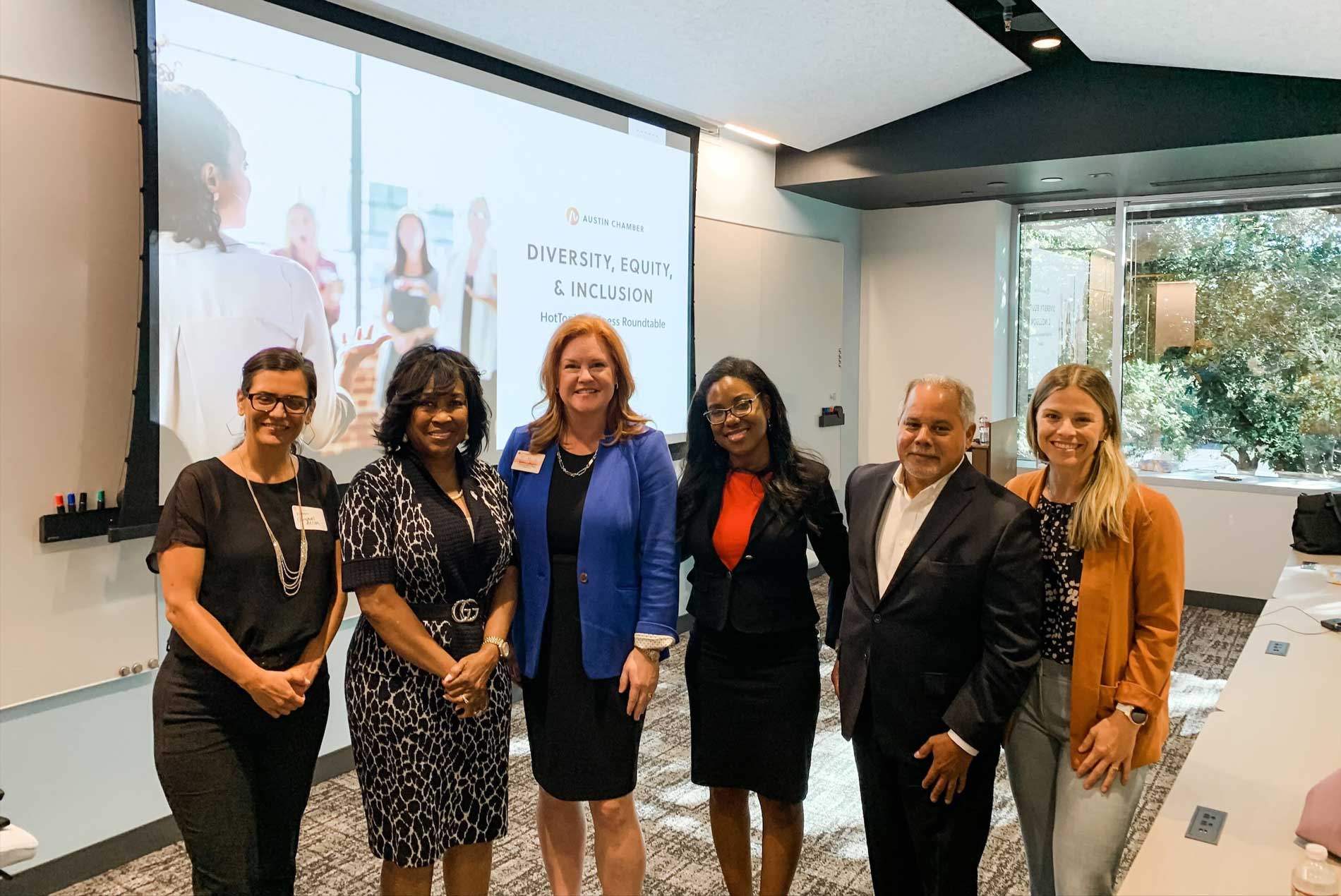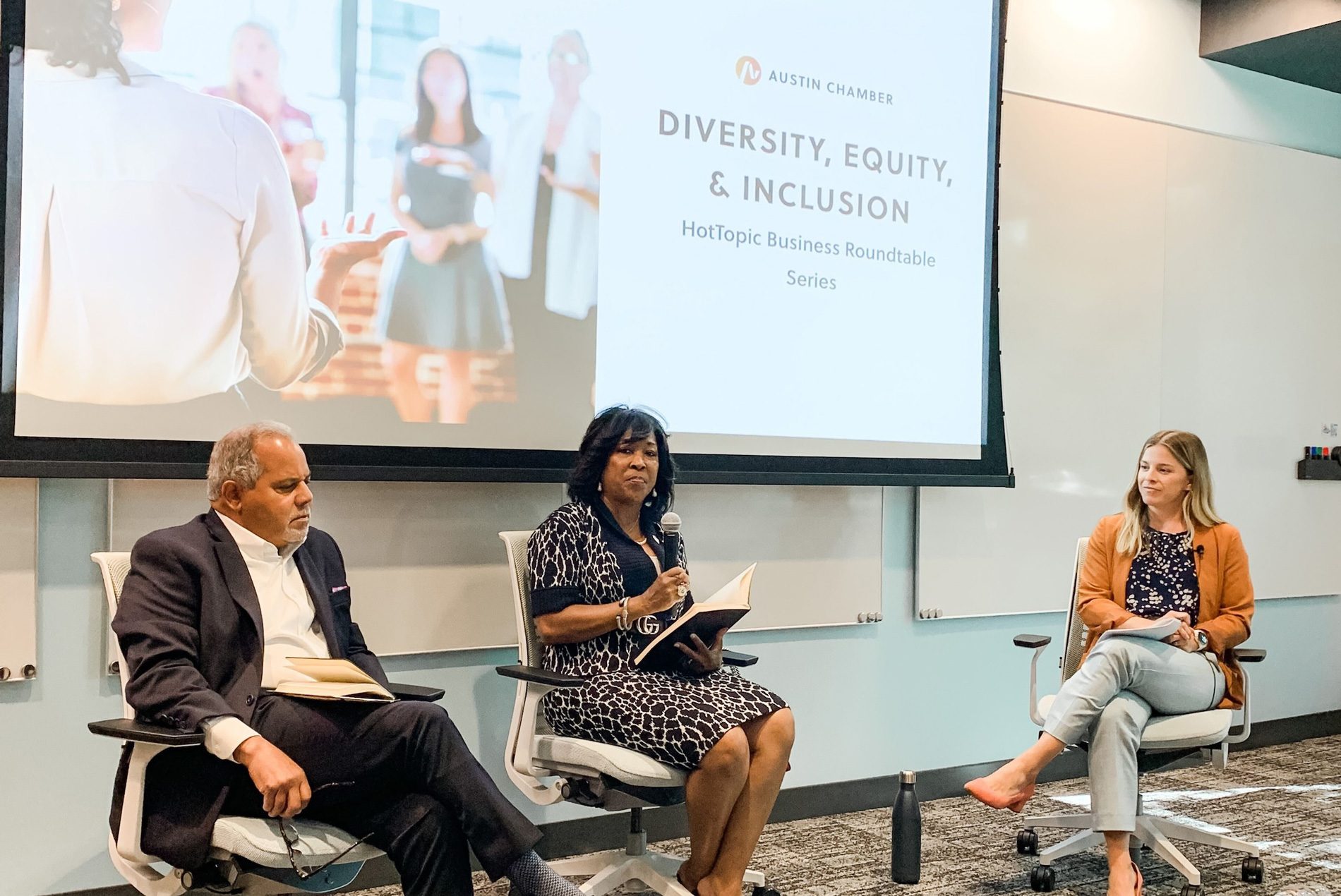HOK’s Kaven Swan talked about strategies for diversity, equity and inclusion at a recent Austin Chamber of Commerce roundtable discussion.
Kaven Swan (fifth from left), a senior principal for HOK’s Aviation + Transportation group, engaged in a dynamic discussion with designer Micki Washington and Karen Box, president and CEO of the Southwest Minority Supplier Development Council, on building foundations in the workplace to enrich communities and develop diverse talent. Kimmy Feldbauer, senior transportation planner with AECOM, moderated the event.
The group shared three main takeaways from the event to improve DEI in design and construction projects.
1. Analyze the Barriers to DEI
Each community or company has its own unique circumstances and challenges that impede diversity and participation. Does the area lack minority representation needed for meaningful contributions to projects? Are training and funding available? Does the community have access to adequate transit? Once these barriers are identified, leaders can create task forces and develop specific strategies to tackle them.
“It’s important to discover and remove barriers early to DEI before projects are underway,” said Swan. “That’s how you get ahead of challenges and have true capacity building in a meaningful and sustainable way.”
2. Collaborate With the Community
Communities and companies should research and connect with other like-minded individuals and organizations looking to increase DEI. Find where firms intersect: local nonprofits, community colleges, the government, black clergy and historically black colleges and universities (HBCUs) have programs supporting DEI initiatives. Partnering with minority- or women-owned businesses is also crucial.
For aviation and transportation projects, Swan recommends that organizations collaborate with the U.S. Department of Transportation on its Equity Action Plan to better serve and expand access to transportation to underserved, overburdened communities. He also encourages engaging with local residents in underserved communities from an employment and training perspective early.
3. Practice What You Preach
To enact meaningful change, diversity, equity and inclusion should be part of a company’s core beliefs, with goals and actions behind those beliefs. The discussion highlighted HOK’s commitment to DEI, describing the firm’s Diversity Advisory Council, the HOK Impact philanthropic group, the Diversity x Design scholarship program, recruitment at HBCUs and the firm’s HOK Tapestry online portal for assembling diverse project teams.
Incorporating DEI into a company’s culture not only has a profound impact on work, but also on recruitment and retention. A company that engages people from many different cultures encourages innovation, new ways of thinking and an inclusive workforce. Representation is essential in the workplace to show that individuals—no matter their background—can achieve success and move up the corporate ladder.

